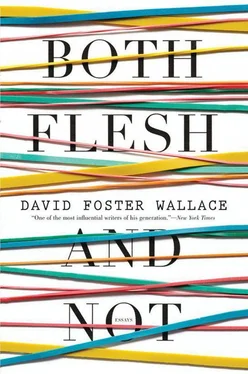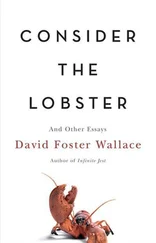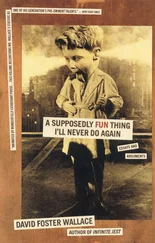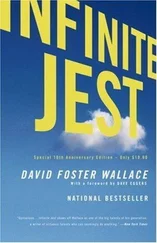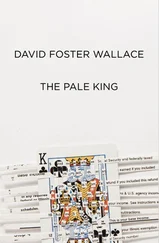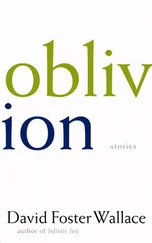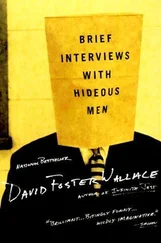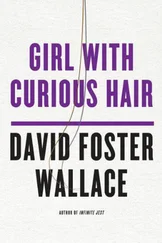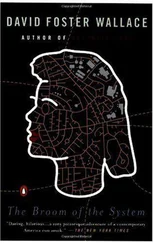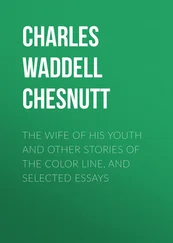Crudely put, the idea that literary language is any kind of neutral medium for the transfer of 5from artist to audience, or that it’s any kind of inert tool lying there passively to be well- or ill-used by a communicator of meaning, has been cast into rich and serious question. With it, too, the stubborn Romanticist view of fiction as essentially a mirror, distinguished from the real world it reflects only by its portability and mercilessly “objective” clarity, has finally taken it on the chin. Form-content distinctions are now flat planets. Language’s promotion from mirror to eye, from organikos to organic, is yesterday’s news (except in those two lonely outposts, TV and the Creative classroom) as the tide of Post-Structuralism, Marxism, Feminism, Freudianism, Deconstruction, Semiotics, Hermeneutics, and attendant — isms and — ics moves through the (“Straight”) U.S. academy and into the consciousness of the conscious American adult.
The crux being that, if mimesis isn’t dead, then it’s on life-support courtesy of those who soon enough will be.
And what a row C.Y. writers can see among its heirs! Only about eighty years after visual-arts movements like Dada and Cubism supplanted “referential” art (no camera inventions to threaten the sovereignty of literary mimesis, see), the literature of the referent, of “psychological glow,” of illusion has finally come under constructive attack from angles as disparate as they are dazzling. The refracted world of Proust and Musil, Schulz and Stein, Borges and Faulkner has, post-War, exploded into diffraction, a weird, protracted Manhattan Project staffed by Robbe-Grillet, Grass, Nabokov, Sorrentino, Bohl, Barth, McCarthy, Garcuishesshy, Gara Márquez, Puig, Kundera, Gass, Fuentes, Elkin, Donoso, Handke, Burroughs, Duras, Coover, Gombrowicz, Le Guin, Lessing, Acker, Gaddis, Coetzee, Ozick. To name just a few. We, the would-be heirs to a gorgeous chaos, stand witness to the rise and fall of the nouveau roman, Postmodernism, Metafiction, the New Lyricism, the New Realism, Minimalism, Ultraminimalism, Performance-Theory. It’s a freaking maelstrom, and the C.Y. writer who still likes to read a bit can’t help feeling torn: if the Program is maddening in its stasis, the real world of serious fiction just won’t hold still .
If one can stomach a good dose of simplification, though, there can be seen one deep feature shared by all the cutting-edge fiction that resonates with the post-Hiroshima revolution. That is its fall into time, a loss of innocence about the language that is its breath and bread. Its unblinking recognition of the fact that the relations between literary artist, literary language, and literary artifact are vastly more complex and powerful than has been realized hitherto. And the insight that is courage’s reward — that it is precisely in those tangled relations that a forward-looking, fertile literary value may well reside.
This doesn’t mean that Metafiction and Minimalism, the two most starkly self-conscious of the movements that exploit human beings’ wary and excited new attention to language, compose or even indicate the directions in which the serious fiction of “whole new generations” will move. Both these forms strike me as simple engines of self-reference (Metafiction overtly so, Minimalism a bit sneakier); they are primitive, crude, and seem already to have reached the Clang-Bird-esque horizon of their own possibility — self-reference being just a tiny wrinkled subset of aboutness. I’m pretty convinced, though, that they’re an early symptom of a dark new enlightenment, that quite soon no truly serious C.Y. writer will be able to pretend anymore that the use of literary expression for the construction of make-believe is a straightforward enterprise. We are the recipients of a knife unprecedentedly vulnerable to its own blade, and all the Writing Program prizes and Mary Tyler Moore Show reruns in the world can’t hide what’s in our hands forever.
Exciting is also confusing, and I’d be distrustful of any C.Y. snot who claimed to know where literary fiction will go during this generation’s working lifetime. It’s obviously true that the revolution I’ve just gushed about has yielded changes in outlook that are as yet primarily destructive: illusions exposed, assumptions overturned, dearly held prejudices debunked. We seem, now, to see our literary innocence taken from us without anything substantial to replace it. An age between. There’s a marvelously apposite Heidegger quotation here, but I’ll spare you.
The bold conclusion here, then, is that the concatenated New Generation with whom the critics are currently playing coy mistress is united by confusion, if nothing else. And this might be why so much of the worst C.Y. fiction fits so neatly into the Three Camps reviewers consign it to: Workshop Hermeticism because in confusing times caution seems prudent; Catatonia because in confusing times the bare minimal seems easy; Yuppie Nihilism because the mass culture the Yuppie inhabits and instantiates is itself at best empty and at worst evil — and in confusing times the revelation of something even this obvious is, up to a point, valuable.
Well, but it’s fair to ask how valuable. Of course it’s true that an unprecedented number of young Americans have big disposable incomes, fine tastes, nice things, competent accountants, access to exotic intoxicants, attractive sex partners, and are still deeply unhappy. All right. Some good fiction has held up a mercilessly powder-smeared mirror to the obvious. What troubles me about the fact that the Gold-Card-fear-and-trembling fiction just keeps coming is that, if the upheavals in popular, academic, and intellectual life have left people with any long-cherished conviction intact, it seems as if it should be an abiding faith that the conscientious, talented, and lucky artist of any age retains the power to effect change. And if Marx (sorry — last dropped name) derided the intellectuals of his day for merely interpreting the world when the real imperative was to change it, the derision seems even more apt today when we notice that many of our best-known C.Y. writers seem content merely to have reduced interpretation to whining. And what’s frustrating for me about the whiners is that precisely the state of general affairs that explains a nihilistic artistic outlook makes it imperative that art not be nihilistic. I can think of no better argument for giving Mimesis-for-Mimesis’s-Sake the chair than the fact that, for a young fiction writer, inclined by disposition and vocation to pay some extra attention to the way life gets lived around him, 1987’s America is not a nice place to be. The last cohesive literary generation came to consciousness during the comparatively black-and-white era of Vietnam. We, though, are Watergate’s children, television’s audience, Reagan’s draft-pool, and everyone’s market. We’ve reached our majority in a truly bizarre period in which “Wrong is right,” “Greed is good,” and “It’s better to look good than to feel good”—and when the poor old issue of trying to be good no longer even merits a straight face. It seems like one big echo of Mayer the fifties’ ad-man: “In a world where private gratification seems the supreme value, all cats are grey.”
Except art, is the thing. Serious, real, conscientious, aware, ambitious art is not a grey thing. It has never been a grey thing and it is not a grey thing now. This is why fiction in a grey time may not be grey . And why the titles of all but one or two of the best works of Neiman Marcus Nihilism are going to induce aphasia quite soon in literate persons who read narrative art for what makes it real.
And, besides an unfair acquaintance with many young writers who are not yet Conspicuous and so not known to you, this is why I’d be willing to bet anything at least a couple and maybe a bunch of the Whole New Generation are going to make art, maybe make great art, maybe even make great art change. One thing about the Young you can trust in 1987: if we’re willing to devote our lives to something, you can rest assured we get off on it. And nothing has changed about why writers who don’t do it for the money write: it’s art, and art is meaning, and meaning is power: power to color cats, to order chaos, to transform void into floor and debt into treasure. The best “Voices of a Generation” surely know this already; more, they let it inform them. It’s quite possible that none of the best are yet among the Conspicuous. A couple might even be… autodidacts . But, especially now, none of them need worry. If fashion, flux, and academy make for thin milk, at least that means the good stuff can’t help but rise. I’d get ready.
Читать дальше
